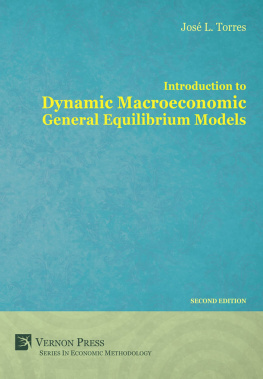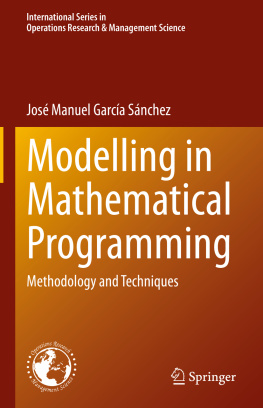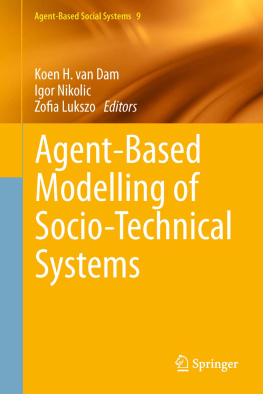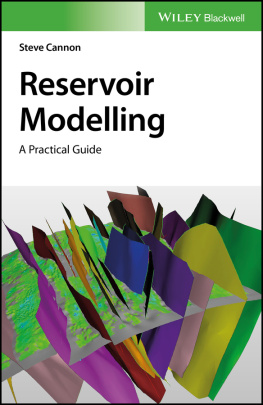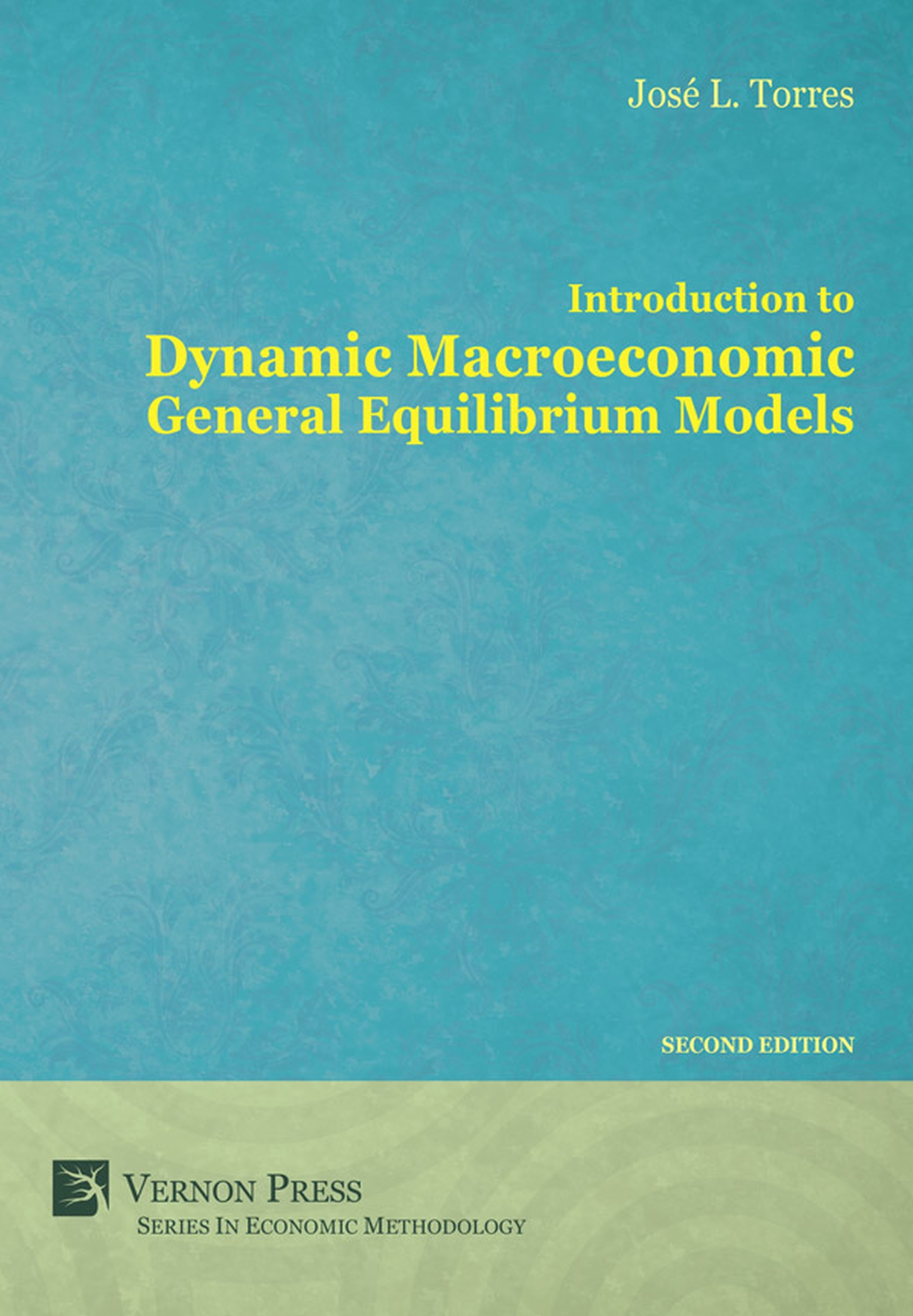Copyright 2016 (Second Edition) by Vernon Press on behalf of the author.
All rights reserved. No part of this publication may be reproduced, stored in a retrieval system, or transmitted in any form or by any means, electronic, mechanical, photocopying, recording, or otherwise, without the prior permission of Vernon Art and Science Inc.
Vernon Press is an imprint of Vernon Art & Science Inc.
| In the Americas: | In the rest of the world: |
| Vernon Press | Vernon Press |
| 1000 N West Street, | C/Sancti Espiritu 17, |
| Suite 1200, Wilmington, | Malaga, 29006 |
| Delaware 19801 United States | Spain |
Library of Congress Control Number: 2014932232
Vernon Series in Economic Methodology, www.vernonpress.com
Revised Edition, ISBN: 978-1-62273-045-2
Product and company names mentioned in this work are the trademarks of their respective owners. While every care has been taken in preparing this work, neither the authors nor Vernon Art and Science Inc. may be held responsible for any loss or damage caused or alleged to be caused directly or indirectly by the information contained in it.
Part I
Introduction to DSGE modelling
Part II
Deviations from the Permanent Income-Life Cycle hypothesis
Part III
Investment and Capital Accumulation
Part IV
The government
Part V
Time Decisions
Part VI
Imperfect competition
Preface
To Anel and Carla
Dynamic General Equilibrium (DGE) models have become the fundamental toolin current macroeconomic analysis. Static models and partial equilibriummacroeconomic models could be useful in some applications but they are of limitedvalue to study how the economy as a whole responds to a particular shock. Thewidespread use of DGE models in modern macroeconomic analysis reflectstheir usefulness as a macroeconomic laboratory that allow us to analyze howeconomic agents respond to changes in their environment, in a dynamic generalequilibrium micro-founded theoretical setting in which all endogenous economicvariables are determined simultaneously. Notwithstanding the approachs importantshortcomings, DGE models are now in common use everywhere, from academicresearch to Central Banks and other public and private economic institutions.Though these models are probably too aggregated and include an awful lotof assumptions about the real world that are clearly too simplistic, theycan be very useful to help understand some of the dynamics driving theeconomy.
This book offers an introductory step-by-step course to Dynamic StochasticGeneral Equilibrium (DSGE) modelling. Modern macroeconomic analysis isincreasingly concerned with the construction, calibration and-or estimation,and simulation of DSGE models. DSGE models start from what we call themicro-foundations of macro-economics, with a heart based on the rationalexpectation forward-looking economic behavior of agents. The book is intended forgraduate students as an introductory course to DSGE modelling and for thoseeconomists who would like a hands-on approach to learning the basics of moderndynamic macroeconomic modelling. While theoretical developments are not toocomplex to understand for the beginner in this topic, practical applications tothe data is usually a more difficult task. Taking models to the data is nowfortunately easier thanks to the development of specific DSGE modellingcomputer software. Once the theoretical model is on hands and the functionsare parameterized, the next step is its application to the data. The usualprocedure consists in the calibration of the parameters of the model usingprevious information or matching some key ratios or moments provided bythe data, or more recently, from the estimation of the parameters usingmaximum likelihood or Bayesian techniques. Taking model to the data is a majorbarrier of entry that has to be paid by those who want to incorporate thisstate-of-the-art tool into their economic analysis. DSGE models cannot be solvedanalytically, except some very simple and unrealistic examples of limitedinterest. This is not a book about solution methods neither about estimationtechniques.
The book starts with the simplest canonical neoclassical DSGE model and thengradually extends the basic framework incorporating a variety of additional features,such as consumption habit formation, non-Ricardian agents, investment adjustmentcosts, investment-specific technological change, taxes, public spending, public capital,human capital, household production, and monopolistic competition. All theseadditional features are introduced in the standard DSGE model separately in orderto clearly identify the effects of each additional feature whereas keeping the model assimple as possible.
At the end of each chapter associated Dynare code is included with the model tobe implemented in Matlab or Octave. Dynare is a very useful and powerful tool todeal with DSGE modelling. With the supply of minimal information regarding thecalibration of the parameter and the equilibrium equations of the model, Dynare cansolve a DSGE model, compute the steady state and carry out stochastic simulationsof shocks in a very simple way. Dynare codes can also be downloaded from the bookshomepage:
http://www.vernonpress.com/title.php?id=18
Finally, I would like to thank Dimitris Pontikakis, Gonzalo F-de-Crdoba, JessRodrguez, Noelia Fernndez and graduate students at the University of Mlaga andUniversity Pablo de Olavide (Seville), for their helpful comments and corrections ofearlier versions of this book.
Jos L. Torres
Farajn (Mlaga), January 2014
Contents
I
1.1
1.2
1.3
2.1
2.2
2.2.1
2.3
2.3.1
2.4
2.4.1
2.4.2
2.5
2.6
2.7
2.7.1
2.7.2
2.8
2.9
II
3.1
3.2
3.3
3.3.1
3.3.2
3.3.3
3.4
3.5
3.6
4.1
4.2
4.3
4.3.1
4.3.2
4.3.3
4.3.4
4.3.5
4.4
4.5
4.6
III
5.1
5.2
5.3
5.3.1
5.3.2
5.3.3
5.4
5.5
5.6
6.1
6.2
6.3
6.3.1
6.3.2
6.3.3
6.3.4
6.4
6.5
6.6
IV
7.1
7.2
7.3
7.3.1
7.3.2
7.3.3
7.3.4
7.4
7.5
7.6
7.7
7.8
8.1
8.2
8.3
8.3.1
8.3.2
8.3.3
8.3.4
8.3.5
8.4
8.5
8.6
9.1
9.2
9.3
9.3.1
9.3.2
9.3.3
9.3.4
9.4
9.5
9.6
V
10.1
10.2
10.3
10.3.1
10.3.2
10.4
10.5
10.6
11.1
11.2
11.3
11.3.1
11.3.2
11.3.3
11.3.4
11.3.5
11.4
11.5
11.6
VI
12.1
12.2
12.3
12.3.1
12.3.2
12.3.3
12.4
12.5
12.6
Chapter 1
Introduction
The Dynamic Stochastic General Equilibrium (DSGE) approach is a cornerstoneof modern macroeconomic analysis. The development of DSGE models inmacroeconomics is mainly a response to two long-lasting challenges: The need toaddress the Lucas critique (Lucas, 1976) and the desire to build micro-foundedmacroeconomic models. Three main terms define this theoretical approach: Dynamic(D), Stochastic (S), and General Equilibrium (GE).
One of the objectives of economic analysis is to understand how an economyworks and to carry out experiments to study the effects of a particular change ordisturbance on the economy. This kind of analysis presents enormous difficulties dueto the complexity of the phenomena we want to explain. In other fields such asphysics or chemistry, which in some ways can be thought as analogous to economics,researchers have experimental laboratories in which to replicate the conditions thatexist in the real world and thus, perform experiments using scale models. In fact, thishas long been the goal of economic analysis; to build scale models of the real worldwith which to perform a number of experiments and to know in advance the effects ofcertain disturbances or changes in economic policies at the macroeconomiclevel.

